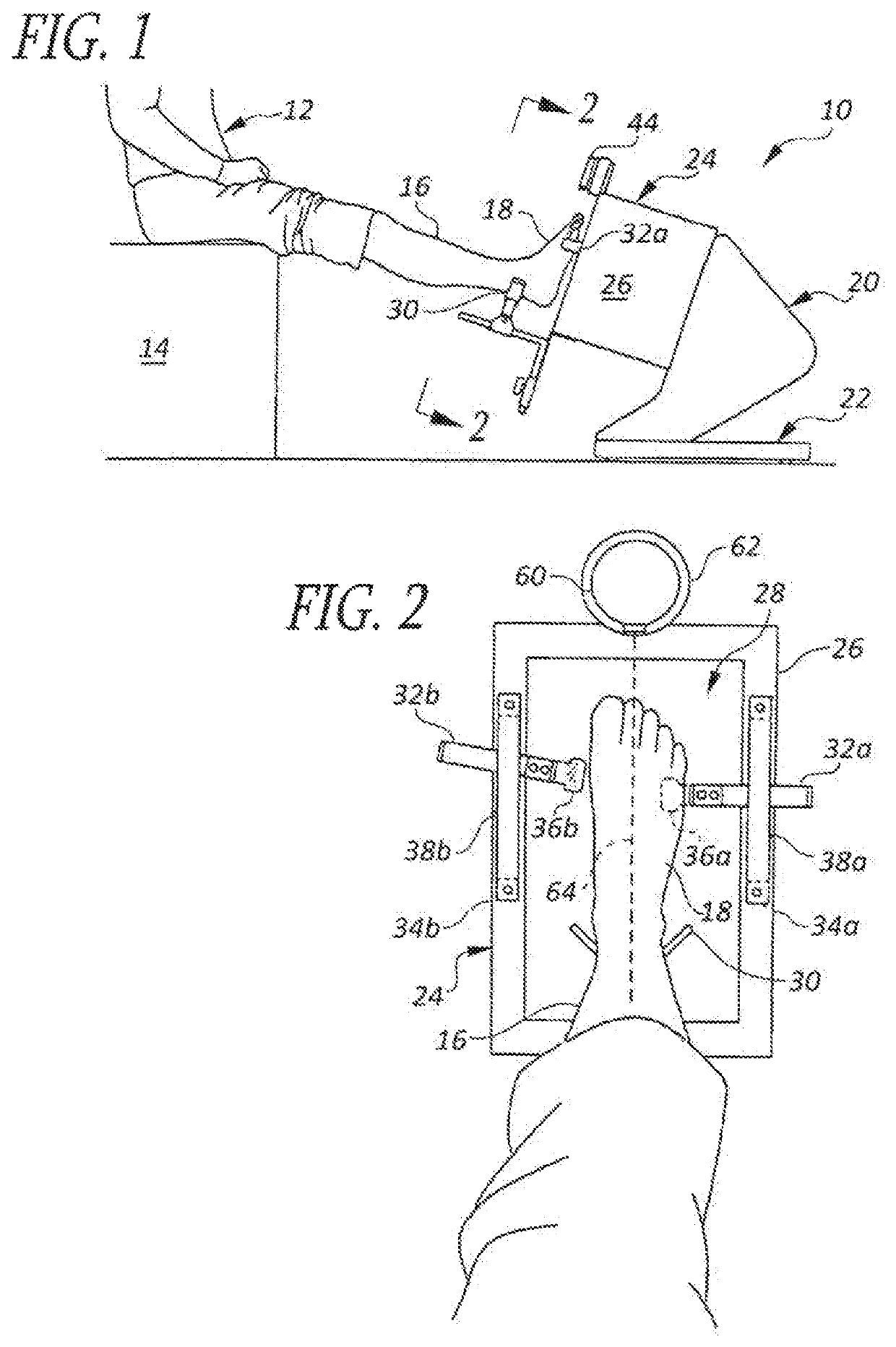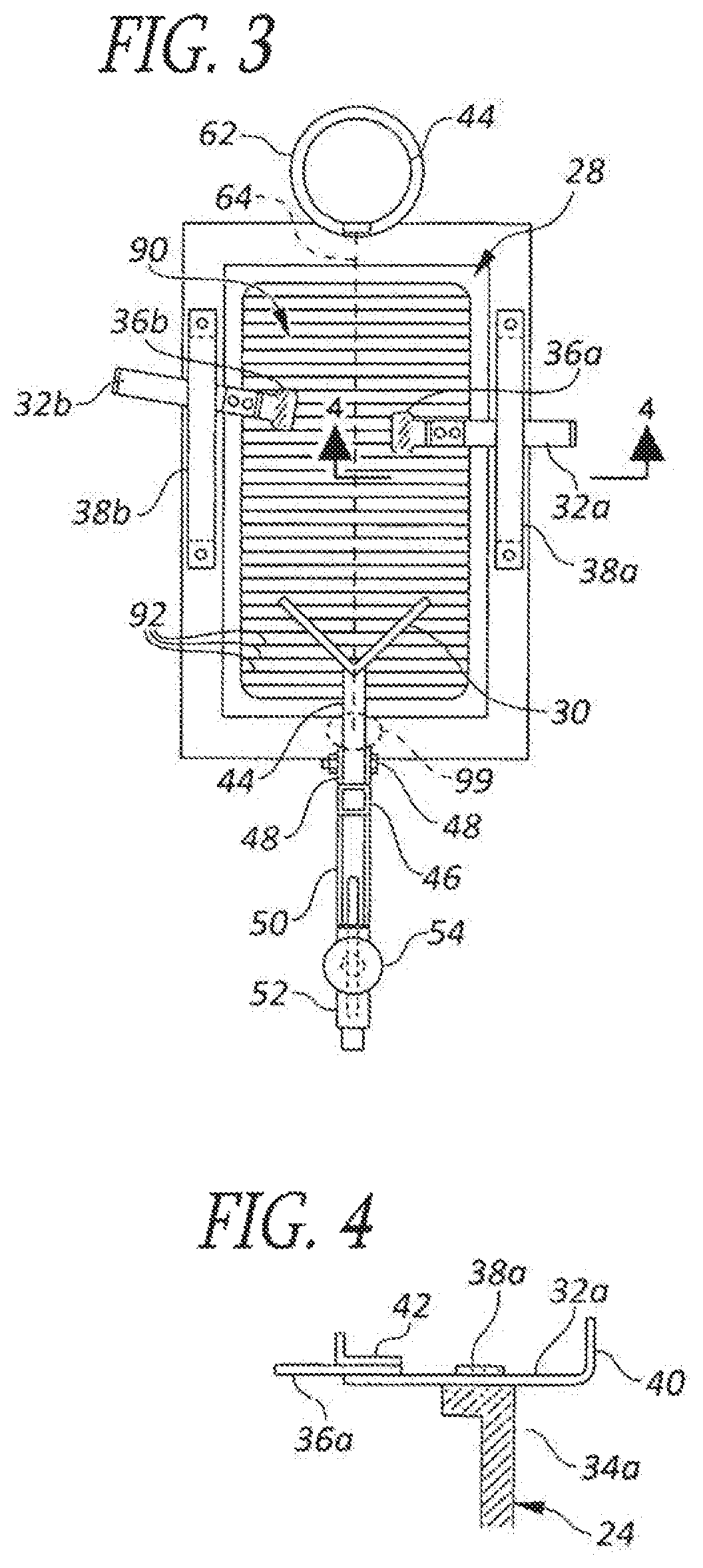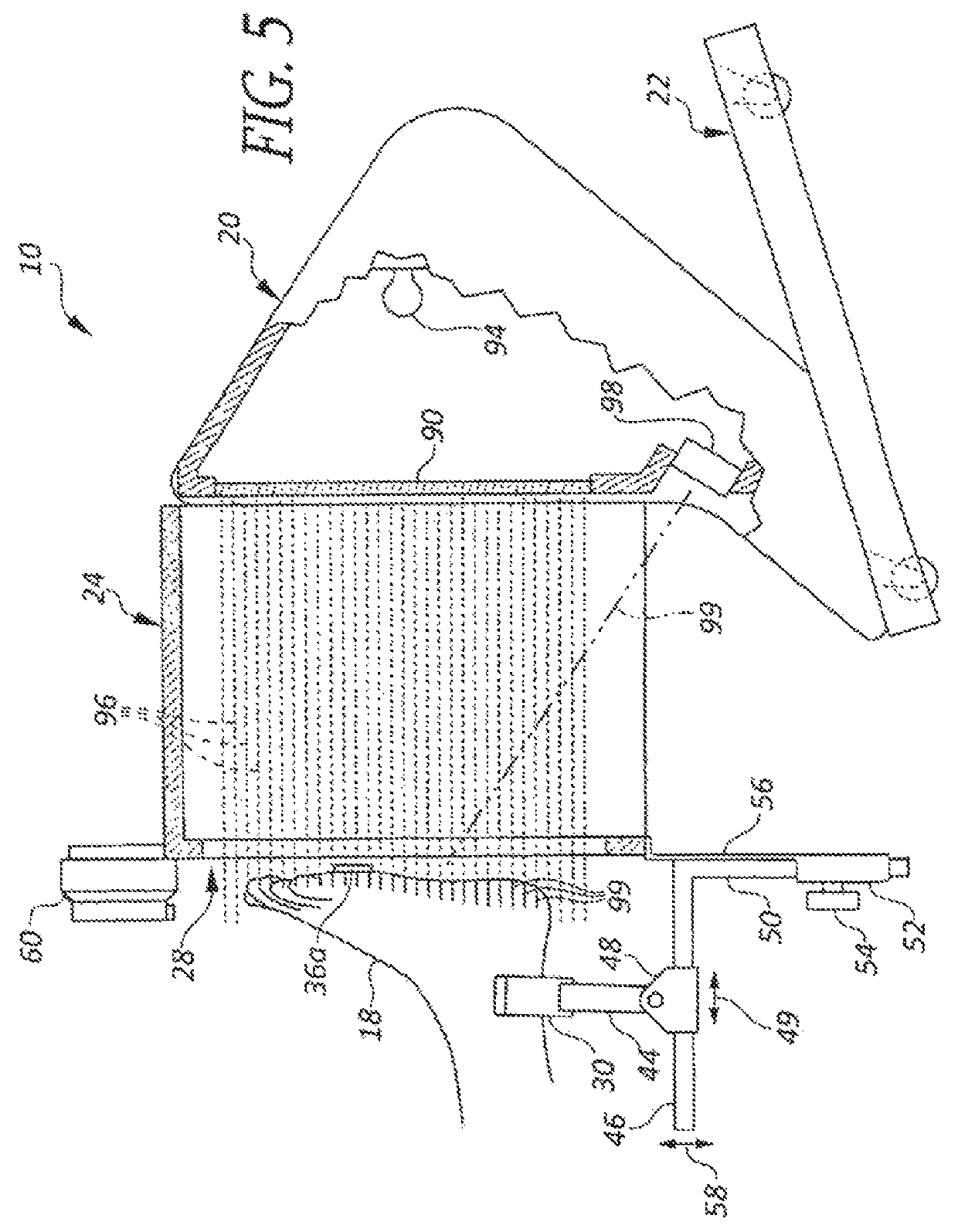Apparatus and method for imaging feet
a technology of foot and foot, applied in the field of foot and foot apparatus, can solve the problems of only providing benefits, inconvenience and potential discomfort for patients, fatiguing clinicians, etc., and achieve the effect of not affecting the softness or bone structure of the foo
- Summary
- Abstract
- Description
- Claims
- Application Information
AI Technical Summary
Benefits of technology
Problems solved by technology
Method used
Image
Examples
Embodiment Construction
[0067]FIG. 1 shows a foot imaging apparatus 10 in accordance with a first preferred embodiment of the present invention. The apparatus is shown in use in conjunction with a patient 12 in a seated position on a chair 14 or other support, with a leg 16 and foot 18 outstretched.
[0068]As can be seen with further reference to FIG. 1, the imaging apparatus 10 includes an optical imaging section 20 mounted on a rolling chassis section 22, and an alignment section 24 that is spaced from the imaging section 20 towards the patient's foot 18. The alignment section 24 in the illustrated embodiment includes a spacer frame 26, which in the embodiment illustrated in FIG. 6-7 is formed by a somewhat box-shaped structure, with a through passage and open ends that define an aperture 28 via which the plantar surface of the foot is exposed to the optics of the imaging section 20. A principal function of the spacer frame is to support the alignment components, as described below, such that the plantar s...
PUM
 Login to View More
Login to View More Abstract
Description
Claims
Application Information
 Login to View More
Login to View More - R&D
- Intellectual Property
- Life Sciences
- Materials
- Tech Scout
- Unparalleled Data Quality
- Higher Quality Content
- 60% Fewer Hallucinations
Browse by: Latest US Patents, China's latest patents, Technical Efficacy Thesaurus, Application Domain, Technology Topic, Popular Technical Reports.
© 2025 PatSnap. All rights reserved.Legal|Privacy policy|Modern Slavery Act Transparency Statement|Sitemap|About US| Contact US: help@patsnap.com



